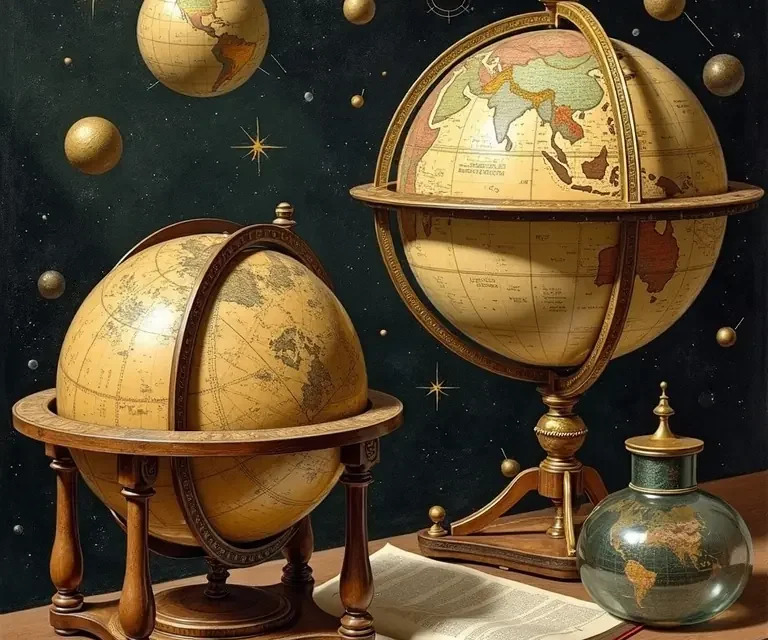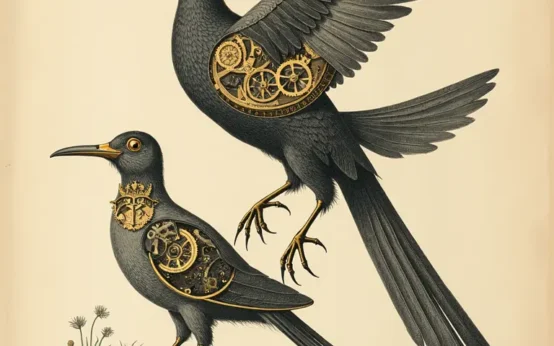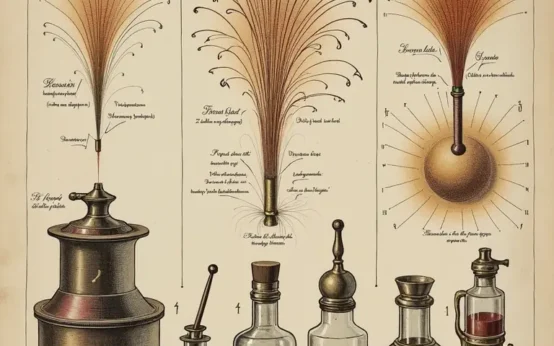For centuries, before the advent of digital planetariums and readily available astronomical data, humanity relied on ingenious mechanical devices to understand and map the cosmos. Among the most captivating of these is the celestial globe – a three-dimensional representation of the celestial sphere, painstakingly crafted to depict the positions of stars, constellations, and other astronomical features. More than just beautiful objects, celestial globes were vital tools for education, navigation, and astrological prediction. This article delves into the curious mechanics of these miniature heavens, exploring their history, construction, and enduring appeal.
A History Etched in the Stars
The earliest precursors to the celestial globe can be traced back to ancient Greece, around the 3rd century BCE. Eratosthenes, a renowned mathematician and geographer, is credited with constructing one of the first globes, although little remains of it today. Ptolemy’s Almagest, a foundational text in astronomy, provided the detailed star catalogs that formed the basis for many subsequent globes. These early globes were largely static representations, lacking the sophisticated mechanisms found in later examples.
The Islamic Golden Age (8th-13th centuries) witnessed a significant revival of astronomical study and globe-making. Scholars translated and expanded upon Greek knowledge, creating highly accurate and ornate celestial globes. These globes often featured intricate designs and inscriptions in Arabic, reflecting the advanced state of astronomical knowledge at the time.
The Renaissance brought a renewed interest in classical learning to Europe. Celestial globe production flourished, becoming a symbol of wealth, education, and intellectual curiosity. Makers like Gemma Frisius and Gerhard Mercator created globes that incorporated the latest astronomical observations and cartographic techniques. The demand for globes increased, driven by the Age of Exploration and the need for accurate navigational tools. You can explore the tools used during this time in /the-curious-chronicle-of-celestial-navigation-stars-sextants-and-the-art-of-finding-your-way/
The 17th and 18th centuries saw the development of increasingly complex and automated celestial globes. These featured moving parts, such as rotating spheres and mechanical dials, allowing users to simulate the apparent motion of the heavens. The craftsmanship involved in creating these globes was exceptional, often requiring the skills of clockmakers, engravers, and artists.
The Anatomy of a Celestial Globe
A typical celestial globe consists of several key components:
- The Sphere: Usually made of brass, copper, or occasionally wood, the sphere serves as the foundational surface onto which the celestial features are mapped. The sphere’s size varies considerably, ranging from a few inches in diameter to several feet.
- The Meridian Ring: A circular band encircling the sphere, often divided into degrees, representing the celestial meridian. This ring allows for the measurement of angular distances between stars.
- The Horizon Ring: Another circular band, usually positioned at an angle, representing the observer’s local horizon. This ring can be adjusted to simulate different latitudes.
- The Polar Axis: A rod or spindle that passes through the poles of the sphere, allowing it to rotate.
- The Hour Circle: A ring marked with hours, used to indicate the time of day and the right ascension of celestial objects.
- The Rete: A delicate, openwork framework representing the constellations. The rete is often the most ornately decorated part of the globe, with stars depicted as small pins or gemstones.
- The Pinnacles: Decorative features, often in the form of dragons or mythical creatures, that support the rete.
The Mechanics of Motion: How Globes Simulate the Heavens
The true ingenuity of a celestial globe lies in its ability to simulate the apparent motion of the stars. This is achieved through a combination of mechanical components and carefully calculated geometry.
Rotation: The most fundamental movement is the rotation of the sphere around its polar axis. This mimics the Earth’s daily rotation, causing the stars to appear to rise in the east and set in the west. The speed of rotation can be adjusted to represent different rates of celestial motion.
Inclination: The angle of the horizon ring can be adjusted to represent different latitudes. This affects the visibility of constellations, as stars that are visible from one latitude may be hidden below the horizon at another.
Precession of the Equinoxes: More sophisticated globes incorporated mechanisms to simulate the precession of the equinoxes, a slow, cyclical wobble of the Earth’s axis that causes a gradual shift in the apparent positions of the stars over long periods of time. This mechanism typically involved a complex gearing system.
Lunar Motion: Some globes even attempted to model the motion of the Moon, using a separate, smaller sphere that revolved around the main sphere. This was a particularly challenging task, as the Moon’s orbit is elliptical and its motion is affected by various gravitational forces.
Materials and Craftsmanship
The construction of a celestial globe demanded a high level of skill and craftsmanship. The materials used were often expensive and required specialized tools to work with.
Metals: Brass and copper were the preferred materials for the sphere, meridian ring, and other structural components. These metals were durable, relatively easy to shape, and could be polished to a brilliant shine. Silver was sometimes used for decorative elements.
Engraving and Etching: The celestial features – constellations, star names, and coordinate grids – were meticulously engraved or etched onto the surface of the sphere. This was a time-consuming process that required a steady hand and a keen eye for detail. The colors used in these engravings often held symbolic meaning, and the techniques employed demonstrate a fascinating intersection of art and science. This is explored further in /the-curious-chemistry-of-lost-colors-pigments-history-and-the-art-of-remembrance/.
Gemstones and Precious Metals: Stars were often represented by small pins, gemstones (such as rubies, sapphires, and diamonds), or tiny pieces of gold or silver. These embellishments added to the globe’s aesthetic appeal and value.
Clockmaking Techniques: The more complex globes, with their rotating spheres and mechanical dials, relied heavily on clockmaking techniques. Makers often collaborated with skilled clockmakers to design and construct the intricate gearing systems.
The Globe as a Tool for Understanding Time
Celestial globes weren’t merely visual representations of the heavens; they were intimately connected to the measurement of time. By aligning the hour circle with the local meridian, one could determine the time of day. The globe also served as a tool for understanding the relationship between celestial motion and the seasons.
Furthermore, the development of celestial globes ran parallel to the evolution of clocks and calendars. The need for accurate timekeeping to predict celestial events drove innovation in both fields. The complex relationship between how we measure time and our observation of the cosmos is a fascinating study, as explored in /the-curious-kinship-of-clocks-and-calendars-a-history-of-times-dual-measurement/.
Automata and the Celestial Sphere
The fascination with mechanical movement led to the creation of even more elaborate celestial globes – those incorporating elements of automata. These globes featured moving figures, animated constellations, and other mechanical surprises. These intricate creations showcase the incredible ingenuity of 18th and 19th-century artisans.
The construction of these automated globes required a deep understanding of mechanics, engineering, and artistry. The gears, levers, and cams that powered these devices were often hidden from view, adding to the sense of wonder and mystery. The art of automaton making shares a lineage with celestial globe creation, both representing a desire to recreate and understand complex systems in miniature. You can explore the broader world of antique automata in /the-curious-anatomy-of-antique-automata-gears-glamour-and-lost-ingenuity/.
Automaton theatre, too, found inspiration in celestial mechanics, often depicting scenes of the heavens or incorporating astronomical themes. /the-curious-mechanics-of-automaton-theatre-a-history-of-miniature-stages/ offers a glimpse into this fascinating intersection of art, science, and engineering.
The Enduring Legacy
While modern technology has largely superseded the need for mechanical celestial globes as practical tools, their historical and aesthetic value remains undiminished. Today, these globes are prized possessions of museums, collectors, and enthusiasts. They serve as reminders of a time when humanity’s understanding of the cosmos was intimately connected to skillful craftsmanship, meticulous observation, and a deep sense of wonder.
The celestial globe is more than just a miniature representation of the heavens; it’s a testament to human ingenuity, our enduring fascination with the stars, and the enduring power of mechanical art. It invites us to contemplate our place in the universe and to appreciate the rich history of astronomical knowledge.
Further Exploration
- Resources on Celestial Globe History: [https://www.atlasobscura.com/articles/celestial-globes](https://www.atlasobscura.com/articles/celestial-globes)
- Online Virtual Globes: Explore interactive celestial globes online to learn more about constellations and star positions.
- Museum Collections: Visit museums with collections of antique globes to see these remarkable objects firsthand.


 The Curious Mechanics of Automaton Birds: A History of Feathered Clockwork
The Curious Mechanics of Automaton Birds: A History of Feathered Clockwork  The Curious Chronicle of Celestial Navigation: Stars, Sextants, and the Art of Finding Your Way
The Curious Chronicle of Celestial Navigation: Stars, Sextants, and the Art of Finding Your Way  The Surprisingly Consistent Science of Antique Sundials – Shadow, Time & Celestial Alignment
The Surprisingly Consistent Science of Antique Sundials – Shadow, Time & Celestial Alignment  The Surprisingly Consistent Science of Historical Weather Vanes – Art, Meteorology & Directional Lore
The Surprisingly Consistent Science of Historical Weather Vanes – Art, Meteorology & Directional Lore  The Unexpectedly Consistent Science of Early Firework Composition: Alchemy, Aesthetics & Aerial Displays
The Unexpectedly Consistent Science of Early Firework Composition: Alchemy, Aesthetics & Aerial Displays  The Surprisingly Consistent Logic of Traditional Herbal Remedies: Beyond Folklore, a History of Observation
The Surprisingly Consistent Logic of Traditional Herbal Remedies: Beyond Folklore, a History of Observation